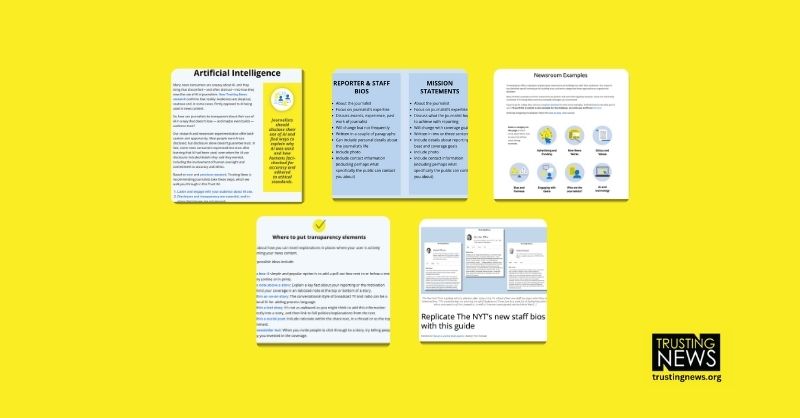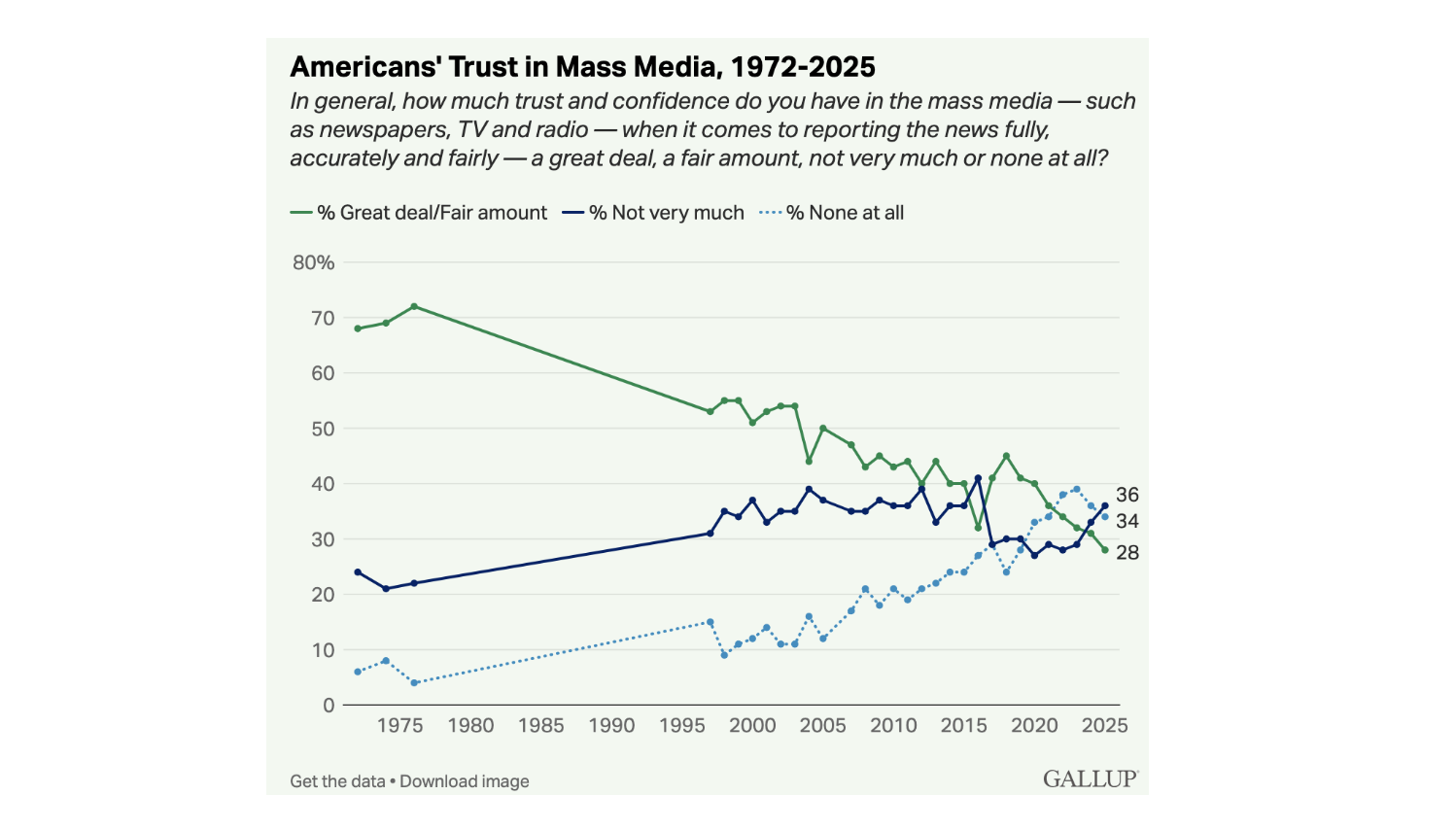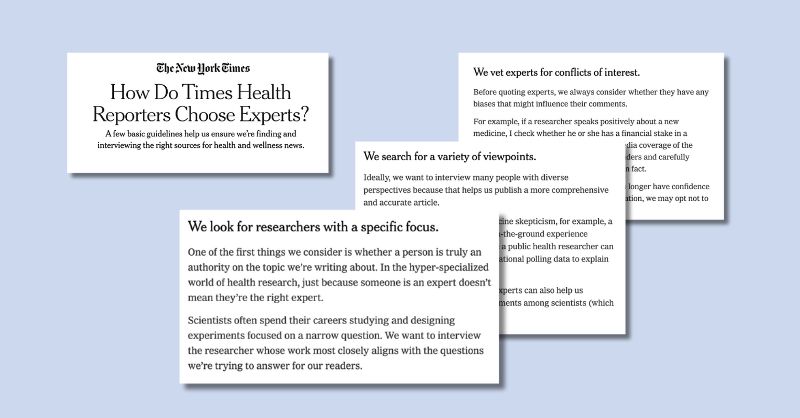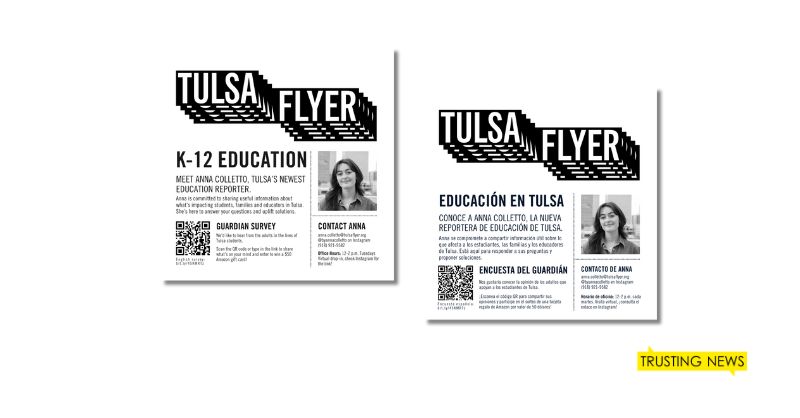
Note: This is the second installment of a three-part newsletter series on News Avoidance. Read part one, Learn about news avoiders with this guide, and part three, Adapt your products for news avoiders in three ways. News avoiders often don’t see their distance from news as a problem. Not only do they not feel like […]
Tell news avoiders these things about your journalism
Note: This is the second installment of a three-part newsletter series on News Avoidance. Read part one, Learn about news avoiders with this guide, and part three, Adapt your products for news avoiders in three ways.
News avoiders often don’t see their distance from news as a problem. Not only do they not feel like they’re missing anything vital when tuning out from the news, but some avoiders say the news actively harms their emotional and mental health.
We also know that news avoiders often don’t see the unique value journalists offer, or understand how credible journalism differs from other sources of information.
This disconnect between journalists’ mission of public service and how the public perceives media is something we talk about often at Trusting News. News avoiders aren’t seeing the value journalists bring to the table, and they likely WON’T see it unless we’re actively communicating it — and backing it up with examples.
If your newsroom is working to be an antidote to what’s frustrating about the news, then you should get clear about the value you’re offering your community. Communicating this could look like explaining: what sets your journalism apart from other media, how you’re working to combat polarization, how you’re working to help people cut through the noise, etc.
In today’s newsletter, we’ll walk you through the process of how to get clear internally about what you offer and then tell that story publicly.
We tested this with partner newsrooms
As part of a recent newsroom program around news avoidance, we had a group of journalists go through an exercise where they took feedback they heard from news avoiders in their community and then addressed it head-on with an FAQ. (If you missed it, revisit last week’s newsletter to learn strategies for how to determine people’s needs around the news.)
We had newsrooms first interview a news avoider, then those newsrooms used what they heard to help inform what sorts of things would be helpful to explain about their own journalism.
Questions to ask about your journalism
As you think about what this could look like in your newsroom, consider what would be most helpful to address from the standpoint of someone who avoids the news.
What type of feedback or complaints have you heard from your audience? Are there specific issues or emotions connected with the news, or transparency elements that would feel particularly helpful to address? (We encourage you to use the News Avoiders interview guide to start.)
Some ideas to get you started:
- Redefine news. People often perceive news as nothing but politics and crime. How can you share the goals and breadth of your coverage?
- Empathize with people’s experience. Acknowledge that news is often overwhelming, depressing and hard to read (especially if it’s been a heavy news week!).
- Share how you cut through the noise. If your organization helps people navigate through a crowded information landscape and understand what’s true, share that.
- Encourage breaks. Point to products (newsletters, podcasts, weekly roundups) that can help people feel caught up without having to invest a lot of time and energy.
- Explain misinformation. Acknowledge it can be a problem for journalists, too, and share how you work to both correct your own errors and correct any misinformation in the broader ecosystem.
- Get on the record about your value and your values. Is what you’re offering significantly better than what people can get elsewhere? If yes, get specific and explain that.
- Show the impact of accountability work. Many people want news coverage that serves as a watchdog, but people see the news as a poor watchdog.
Then, translate these into actual questions you can answer about your work. An FAQ is a great way to collect your answers in one place. Below are some questions that journalists in the program came up with that we’d encourage you to use.
- What do you cover?
- What’s the fastest way for me to feel caught up on your biggest news stories?
- How can I stay informed without reading the news every day?
- Why do you have a paywall?
- What are you best known for?
- What are your ethics?
- Many people see news as contributing to polarization. How are you working to do otherwise?
- What is your mission? (Use examples from your reporting to back it up.)
- Why do you not report more “good news?”
- What is your agenda?
- Is it difficult to report on something and remove the way you feel about it?
- It’s hard to know whether what I’m reading and hearing is true. Why can I trust what you guys do?
- You talk about accountability, but who holds you accountable?
- How do you define misinformation and what are you doing about it?
Tip: We suggest newsrooms continually refocus on what will be most helpful to news avoiders. There are TONS of things we’d love newsrooms to explain and get on the record about, but if your focus is news avoiders, they probably won’t care as much about your politics as they do about what news you are or aren’t covering. (If you need a refresher on the mindset of news avoiders, ground yourself in perceptions of news avoiders here.)

Going public (with a template you can use!)
It’s important that journalists work to reach news avoiders where they are. That’s why as part of this program, we encouraged journalists to share their answers work beyond their organization’s website and normal channels.
Of course, news avoiders aren’t actively seeking out news content. Rather, like most casual news consumers, they likely only bump into news content in areas where they spend time online, like social media.
That’s why we created a social media Canva template for journalists to copy and adjust to make it easier to share parts of this FAQ on social.
These images could be turned into carousels or galleries by adding info about specific products or strategies relevant to your newsroom. For example, you could follow an image about trying *not* to overwhelm people with a few screenshots or examples from your daily quick hits newsletter.
Also consider regularly using social video spots to explain your approach on Instagram or TikTok (check out how The Kansas City Star and PolitiFact did this).
Social media is just a starting point. We also encourage you to think about other avenues for sharing this messaging with news avoiders — such as collaborating with community organizations or influencers who reach an audience you don’t.
Need help? Reach out!
If this list of questions or guide inspired your work, we’d love to hear about it. Reach out to our team by responding to this email, or on LinkedIn or X.
At Trusting News, we learn how people decide what news to trust and turn that knowledge into actionable strategies for journalists. We train and empower journalists to take responsibility for demonstrating credibility and actively earning trust through transparency and engagement. Subscribe to our Trust Tips newsletter. Follow us on Twitter and Facebook. Read more about our work at TrustingNews.org.

Project manager Mollie Muchna (she/her) has spent the last 10 years working in audience and engagement journalism in local newsrooms across the Southwest. She lives in Tucson, Arizona, where she is also an adjunct professor at the University of Arizona’s School of Journalism. She can be reached at mollie@trustingnews.org and on Twitter @molliemuchna.



